Klein Tools HVCT1 Handleiding
Klein Tools
Meetapparatuur
HVCT1
Bekijk gratis de handleiding van Klein Tools HVCT1 (14 pagina’s), behorend tot de categorie Meetapparatuur. Deze gids werd als nuttig beoordeeld door 69 mensen en kreeg gemiddeld 4.4 sterren uit 35 reviews. Heb je een vraag over Klein Tools HVCT1 of wil je andere gebruikers van dit product iets vragen? Stel een vraag
Pagina 1/14

INSTRUCTION MANUAL
High-Voltage Contact Tester
5kV to 36kV AC
HVCT1

SYMBOLS
Warning or Caution Risk of Electrical Shock Suitable for Live Working
GENERAL SPECIFICATIONS
The High Voltage Contact Tester (HVCT1) is intended to provide added safety to crew members required to work on
overhead distribution lines. The HVCT1 detects voltage between 5kV AC and 36kV AC. When used properly, the detector
provides visual and audible warning signals of energized conductors.
Always follow approved industry, OSHA and company work practices & safety procedures when working on or near
high-voltage systems.
• Voltage Range: 5kV – 36kV AC
• Frequency: 50 Hz – 60 Hz
• Type: Capacitive
• Use: Indoor / Outdoor Use
• Indicator Group: 3 = Detector with alert state and indicator of voltage presence
• Climate Category: N
• Operating and Storage Temperature: -13 °F to 131°F (-25°C to 55°C)
• Operating and Storage Humidity: 20% to 96%
• Class: L = Detector without contact electrode extension
• Power Source: 6LR61 (9V) battery
• Self-Test: Integrated test for indicator and sound operation
• Case Dimensions: 11" x 9" x 3.5" (279 x 229 x 89 mm)
• Weight: 0.68 lb. (0.31 kg)
Speci cations subject to change.
1. Probe
2. Main housing
3. Hot stick connection point
4. Power/Test button
5. Red LED – Voltage Indicator
6. Green LED – Power On
7. Orange LED – Low Battery
8. Buzzer
FEATURE DETAILS
4
2
3
6
7
5
8
1

OPERATING INSTRUCTIONS
FOR USE BY TRAINED PERSONNEL ONLY
Anyone using this instrument should be knowledgeable and trained about the risks involved with measuring medium and
high voltage. They must also understand the importance of taking safety precautions as well as testing the instrument
before and after using it to ensure that it is in good working condition.
Prior to use, always inspect the tester for visible signs of damage. If there is any sign of damage, or if the tester does
not operate correctly, discontinue use.
Always test on a known live circuit to verify tester functionality. The tester should be used as an indication only.
Tester should be kept clean and dry. If it is not, wipe with a clean, dry lint-free cloth.
SITUATIONS TO AVOID
Certain situations and system configurations may cause electrical field interference that could affect the operation of
the tester. It is imperative that the user be aware of and identify all such conditions which may exist. Examples of these
situations include:
1. 90° Corner Configurations – Position the tester to at least 3 ft (1 m) on both sides of corner configurations. Any corner
configuration—including conductor configurations, busbar and other electrical apparatus—may cause field cancellation,
causing the tester to not operate correctly.
2. Same-Phase Interference – When two conductors of the same phase are in close proximity to one another, the field
generated could shield the tester, causing it not to operate. Position the tester in areas which will remove it from these
situations.
3. Opposite Phase Interference – This condition may occur if you’re testing a grounded and de-energized conductor which
is in close proximity to a live, ungrounded conductor. If you are within the field of the energized conductor, this may
cause the tester to indicate that the de-energized line is energized. Attempt to approach the conductor you want to test
from outside this possible field.
SELF-TEST
Before using the tester, perform a self-test of the unit. The HVCT1 uses an integrated electronic device to perform a self-
check of the correct operation of the indicator and power circuits. This self-test function ONLY confirms battery sufficiency,
system integrity, and power is on. Always test on known live circuit to verify tester functionality prior to use, and again
after use in the event of indication that voltage is not present.
Press and hold the Power/Test button
4
. Look for the red
5
, green
6
and orange
7
LEDs to flash, and listen for a
beep sound.
When the Power/Test button is released, the tester remains on and ready. The green LED will remain illuminated and the
tester remains operative for 2 minutes. When the green LED turns off, the unit is off.
OPERATION
This probe is intended for overhead applications only. See Fig. 1 for ideal detection angle.
Before using the tester, a hot stick or the Klein Tools Telescoping Handle (Cat. No. HV43) must be attached. Only use with
hot sticks and rubber gloves meeting industry standards. Always follow approved industry, OSHA and company work
practices & safety procedures when working on or near high-voltage systems.
The HV43 Telescoping Handle may be used up to 10kV AC.
Check to ensure that the metal probe
1
is firmly screwed into the top of the
tester before using.
Touch the metal probe directly to the conductor, as close to a 90° orientation as
possible (Fig. 1) Look for the red LED to illuminate and listen for a beep sound,
indicating the presence of voltage. If the red LED does not light and the beep
does not sound, the conductor may not be energized. Perform the Self-Test
again, to ensure the unit is in proper working condition.
Note: in the absence of voltage, the green LED will remain illuminated for up to
two minutes to indicate the tester is still on.
When the orange LED is illuminated, this indicates a low battery. Do not
attempt to use the tester when the orange LED is lit. See Battery Replacement
instructions under MAINTENANCE.
Fig. 1
VG
90°
HOT STICK
Ideal detection angle
CONDUCTOR
Product specificaties
| Merk: | Klein Tools |
| Categorie: | Meetapparatuur |
| Model: | HVCT1 |
Heb je hulp nodig?
Als je hulp nodig hebt met Klein Tools HVCT1 stel dan hieronder een vraag en andere gebruikers zullen je antwoorden
Handleiding Meetapparatuur Klein Tools

8 Juli 2025
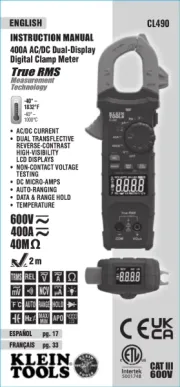
14 April 2025

13 Januari 2025

13 Januari 2025

18 November 2024

12 November 2024

24 September 2024

21 September 2024

21 September 2024

18 Juni 2024
Handleiding Meetapparatuur
- Ermenrich
- Albrecht
- Laica
- Oricom
- Eizo
- Westfalia
- Wentronic
- Tempo
- Perel
- Corentium
- Black Decker
- Truelife
- Omnitronic
- Intact
- Technoline
Nieuwste handleidingen voor Meetapparatuur
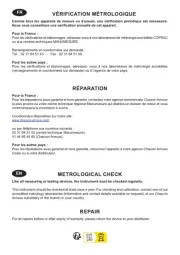
14 September 2025

13 September 2025
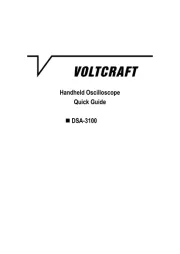
13 September 2025
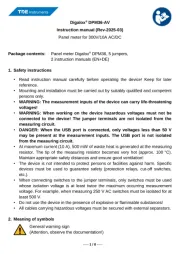
13 September 2025

13 September 2025
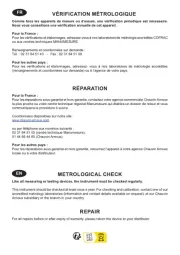
12 September 2025
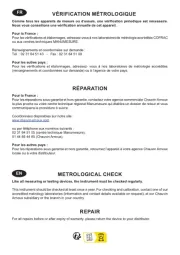
12 September 2025
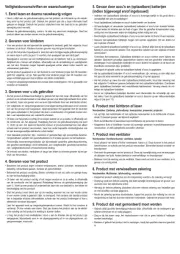
12 September 2025
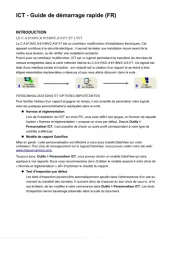
11 September 2025
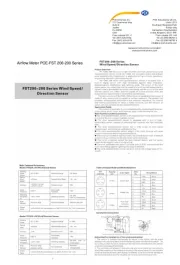
11 September 2025